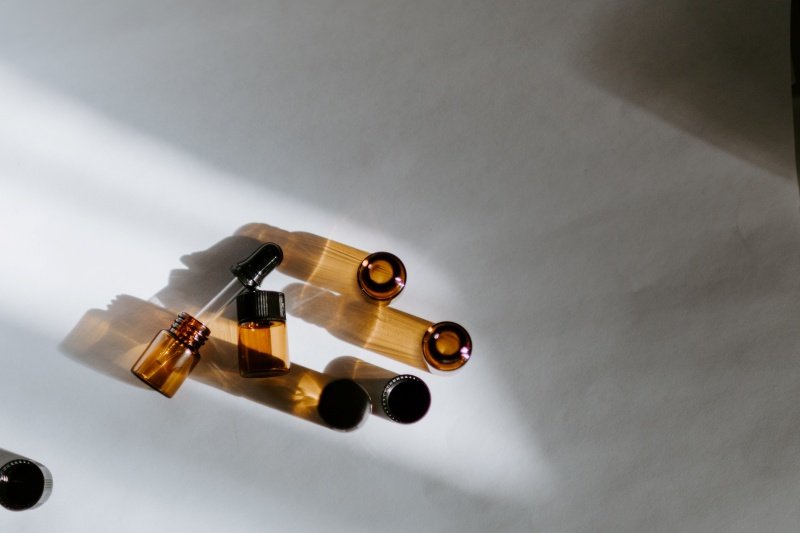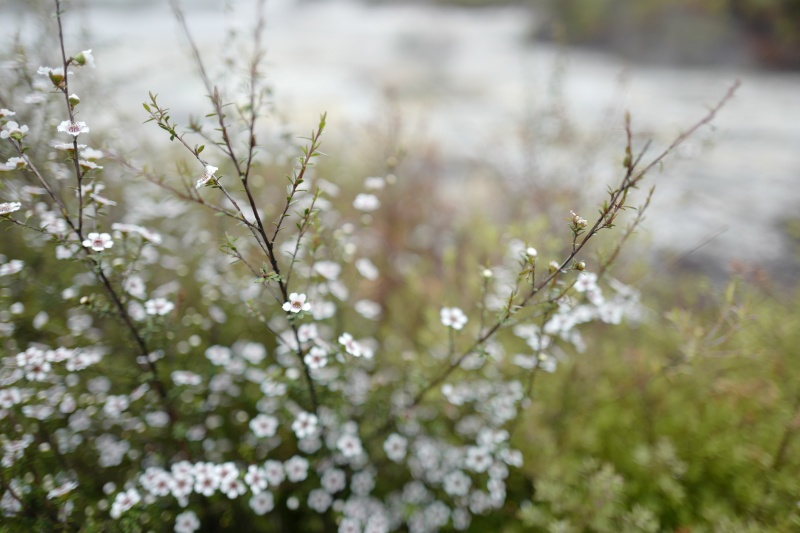Acne is a skin condition that affects people of all ages and can be a source of discomfort.
While numerous skincare products and remedies are available, two natural alternatives have gained significant attention: mānuka oil and tea tree oil.
The availability of these two essential oils in the market presents positive prospects for individuals dealing with acne. This development allows for treating acne through products containing natural active ingredients, eliminating the need to rely on prescription medications that can be costly and, in some cases, lead to adverse side effects.
In the Public Eye

In light of the increasing resistance observed in conventional antibiotics, there has been a strategic shift towards the exploration of natural products as potential sources for developing antimicrobial agents characterised by innovative mechanisms of action. Thus, the manifold evidence substantiating such products’ antimicrobial, anti-parasitic, and anti-inflammatory properties has paved the way for a significant interest in establishing essential oils as an alternative.
While tea tree oil is well-known in the consumer market, manuka oil is newly emerging as effective against a wide range of gram-positive and gram-negative bacteria – key in the control of acne.
While tea tree oil is well-known in the consumer market, manuka oil is newly emerging as effective against a wide range of gram-positive and gram-negative bacteria – key in the control of acne.
Research shows that mānuka oil is effective against pathogenic bacteria such as Staphylococcus epidermidis and Propionibacterium acnes, both of which are responsible for causing acne. A similar study in 2018 focused on evaluating the effectiveness of commercial essential oil combinations against these two pathogens to identify synergistic interactions and potentially suitable essential oils for blending. Results confirmed that manuka oil was predominantly engaged in synergistic interactions, totalling four, against Staphylococcus epidermidis.
Moreover, there is a rising occurrence of mask-related acne (or maskne), a subtype known as acne mechanica, associated with using personal protective equipment (PPE) and face masks during the COVID-19 pandemic. This phenomenon is affecting individuals who have previously not experienced issues with acne.
Several studies have shown that East Cape mānuka essential oil is effective in treating maskne.
Kim et al. and Wu (2011) conducted a study that demonstrated the efficacy of mānuka oil in reducing acne and exhibiting bactericidal effects against Propionibacterium acnes. The minimum inhibitory concentration (MIC) was found to be 0.211% w/v or 2.11 mg/mL, while the minimum bactericidal concentration (MBC) was reported as 0.25% w/v or 2.5 mg/mL.
A lower MIC value indicates that a smaller concentration is required to inhibit the growth of the organism effectively. Therefore, essential oils with lower MIC scores are considered more effective as antimicrobial agents.
What Is Acne?
Acne, often referred to as “pimples,” “spots,” or “zits,” is a chronic inflammatory skin condition associated with two types of bacteria: Cutibacterium acnes (formerly known as Propionibacterium acnes) and Staphylococcus epidermidis. It primarily affects the hair follicles and sebaceous glands, commonly occurring when these follicles become clogged with a combination of oil and dead skin cells. Acne typically presents as whiteheads, blackheads, or pimples and predominantly appears on the face, forehead, chest, upper back, and shoulders.
Statistics show that acne is a prevalent disorder, affecting approximately 85% of teenagers and 14% of adults.
While Cutibacterium acnes is the predominant microorganism within the microbiota of healthy adults, only a minority of individuals actually develop acne. This underscores the significance of investigating skin diseases within the broader framework of factors such as the microbiome, genetics, overall health status, and environmental influences.
What Is Mānuka Oil?

Mānuka oil represents a relatively recent addition to the range of botanical ingredients in the skincare industry.
Mānuka oil is derived from the leaves and branches of the mānuka tree (Leptospermum scoparium), the same plant that produces mānuka honey.
While many individuals are acquainted with the nutritional and antibacterial attributes of mānuka honey, mānuka oil possesses a distinct chemical composition and exhibits different antimicrobial and anti-inflammatory properties. It has a long history of use among indigenous communities for treating various ailments, making it a promising candidate for addressing acne issues.
What Is Tea Tree Oil?

Tea Tree oil, also known as Melaleuca oil, hails from the leaves of the Tea Tree (Melaleuca alternifolia), which is native to Australia. Tea Tree oil has garnered immense popularity in skincare due to its natural antiseptic and antimicrobial properties. It is commonly found in various over-the-counter acne products.
Comparing Mānuka Oil and Tea Tree Oil
Chemical Composition
Mānuka oil is sometimes referred to as ‘New Zealand’s Tea Tree,’ but it is crucial to recognise that the chemical profiles of mānuka oil and Australian tea tree oil are notably dissimilar.
Like Australian tea tree oil, mānuka oil contains therapeutic components that can yield significant antimicrobial effects even when used in very low concentrations.
Mānuka oil contains a higher concentration of a compound called β-triketones, including flavesone, leptospermone, isoptospermone, and grandiflorone. Altogether, these triketones formulate mānuka oil to have stronger antibacterial and antimicrobial properties.
Tea tree oil shares these antibacterial properties, albeit to a lesser degree.
Scent
A milder scent characterises manuka oil due to its high sesquiterpene content, a compound known for its lower volatility.
Tea tree oil is characterised by its high content of monoterpenes, which contribute to its distinctive and robust aroma, which many find unpleasant.
Origin
Mānuka oil is native to New Zealand, and the mānuka plant is sturdy, thriving throughout the entire island. Scientists propose that mānuka oil has adapted to New Zealand’s intense sunlight, which is partially attributed to the ozone layer’s depletion.
In contrast, tea tree oil predominantly grows in Australia, with approximately 44 species endemic in that region.
Mānuka Oil vs Tea Tree Oil for Acne
Mānuka oil demonstrates a remarkable potency, with a bactericidal capability exceeding that of Tea Tree Oil by more than 12 times when tested against Propionibacterium acnes (0.102% compared to 1.25%, respectively).
Mānuka oil’s antibacterial properties make it effective against the acne-causing bacterium Propionibacterium acnes. It helps minimise redness and inflammation associated with acne, promoting faster healing of blemishes. It has anti-inflammatory properties that can soothe irritated skin and hold a more pleasant, smoother aroma than tea tree oil.
Tea tree oil’s primary advantage is its ability to kill a broad range of bacteria and fungi, making it effective against various forms of acne. It helps unclog pores, reduce inflammation, and dry out pimples. Many people find it effective in minimising the appearance of acne scars.
How to Use Mānuka Oil and Tea Tree Oil for Acne
Both oils should be used with caution and diluted to avoid skin irritation. Essential oils are highly concentrated extracts obtained from plants and are more potent than the plants themselves.
Before applying any essential oil to the facial skin, conducting a small patch test on the inner part of your elbow is advisable. Watch for signs of skin sensitivity or any allergic reaction, which may manifest as:
- Itchiness
- Redness
- Swelling
- Burning sensation
This precaution can help ensure that the oil is well-tolerated by the skin.
Mānuka Oil: Mix 1-2 drops of mānuka oil with a carrier oil like jojoba or coconut oil and apply it to acne-prone areas as a spot treatment using a cotton ball or swab. Leave it on for a few hours or overnight.
Tea Tree Oil: Dilute tea tree oil with a carrier oil using a 1:1 ratio. Apply a small amount to blemishes using a cotton swab. Alternatively, add a few drops of tea tree oil to a regular face wash.
Which Oil Is Better for Acne?
The choice between mānuka oil and tea tree oil depends on individual skin type and personal preferences.
Acne management can be a complex task, but both mānuka oil and tea tree oil offer valuable solutions. However, it is essential to exercise caution in their use, adhere to dilution recommendations, and consider potential side effects.
Recognise that individual results may vary; what works best for one person might differ from others’ experiences.
With the guidance of a dermatologist, a tailored skincare routine can be established to address specific needs and assist in achieving clear and healthy skin.

